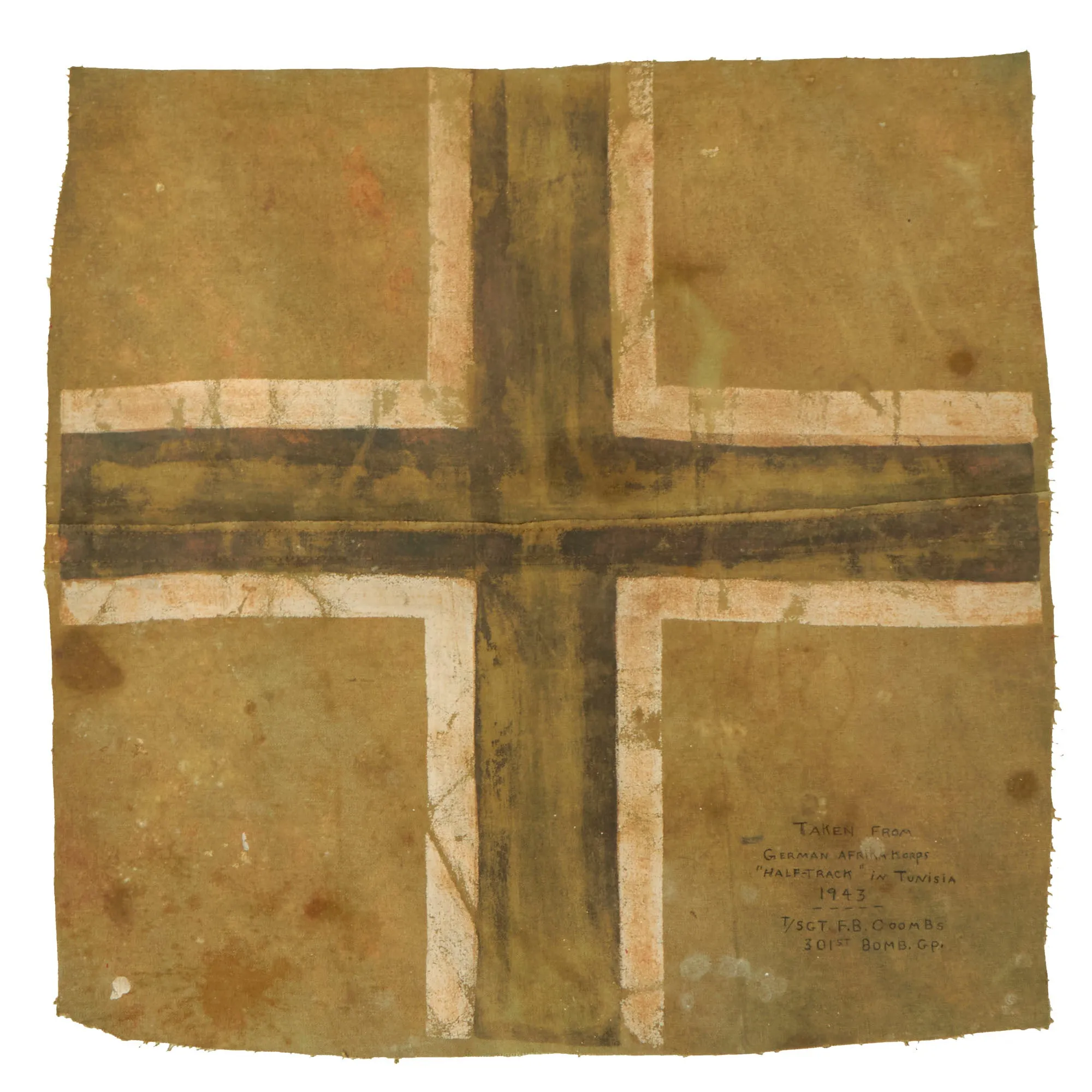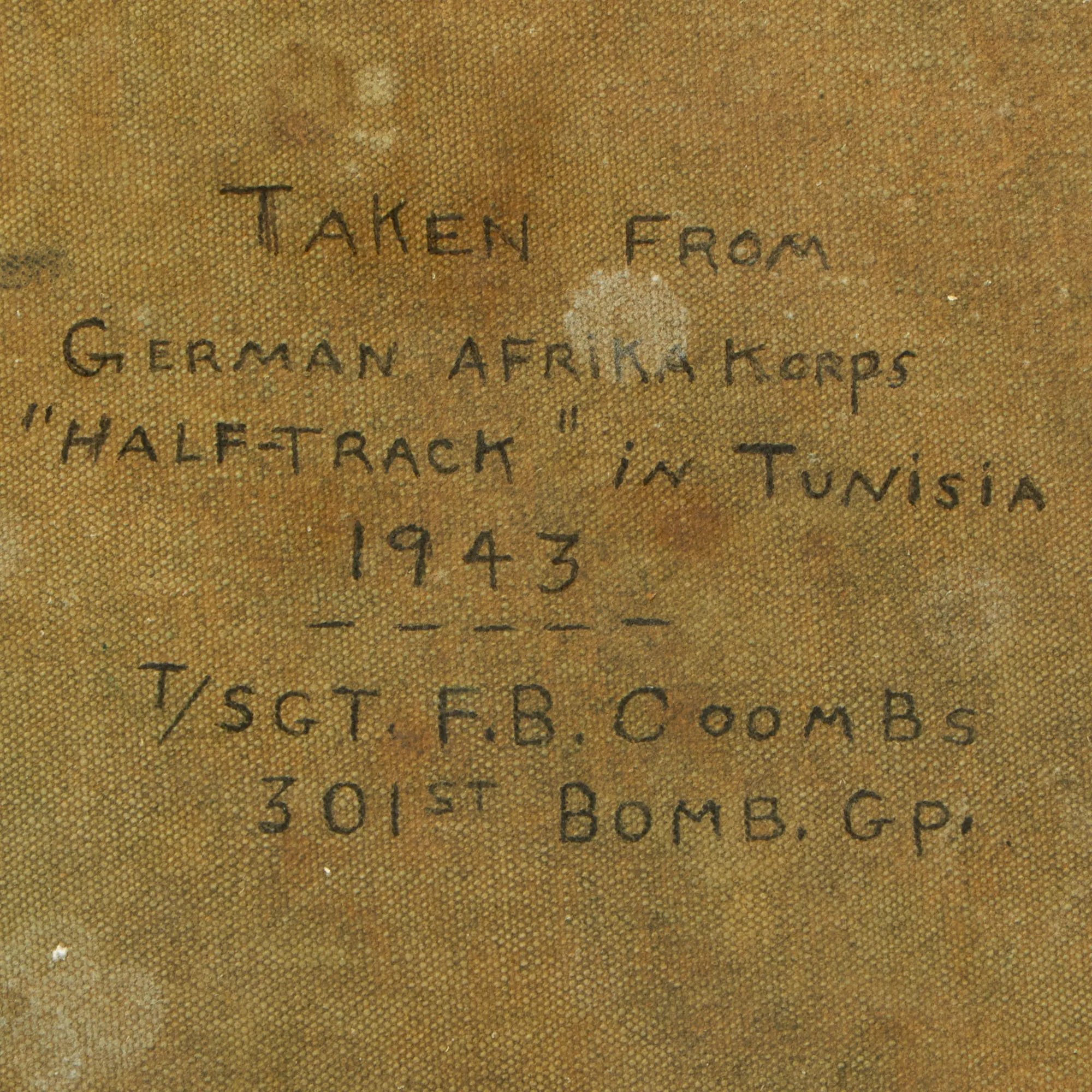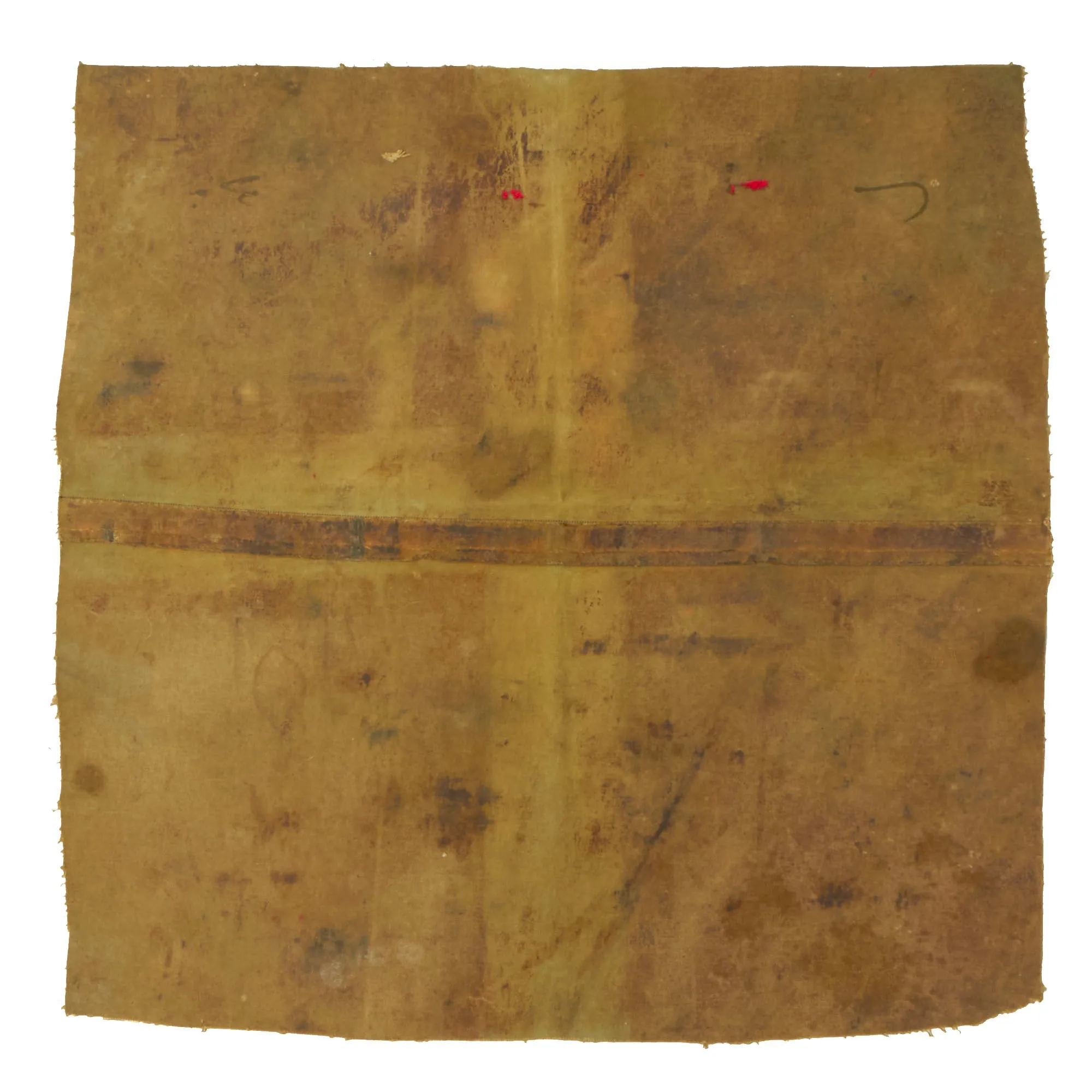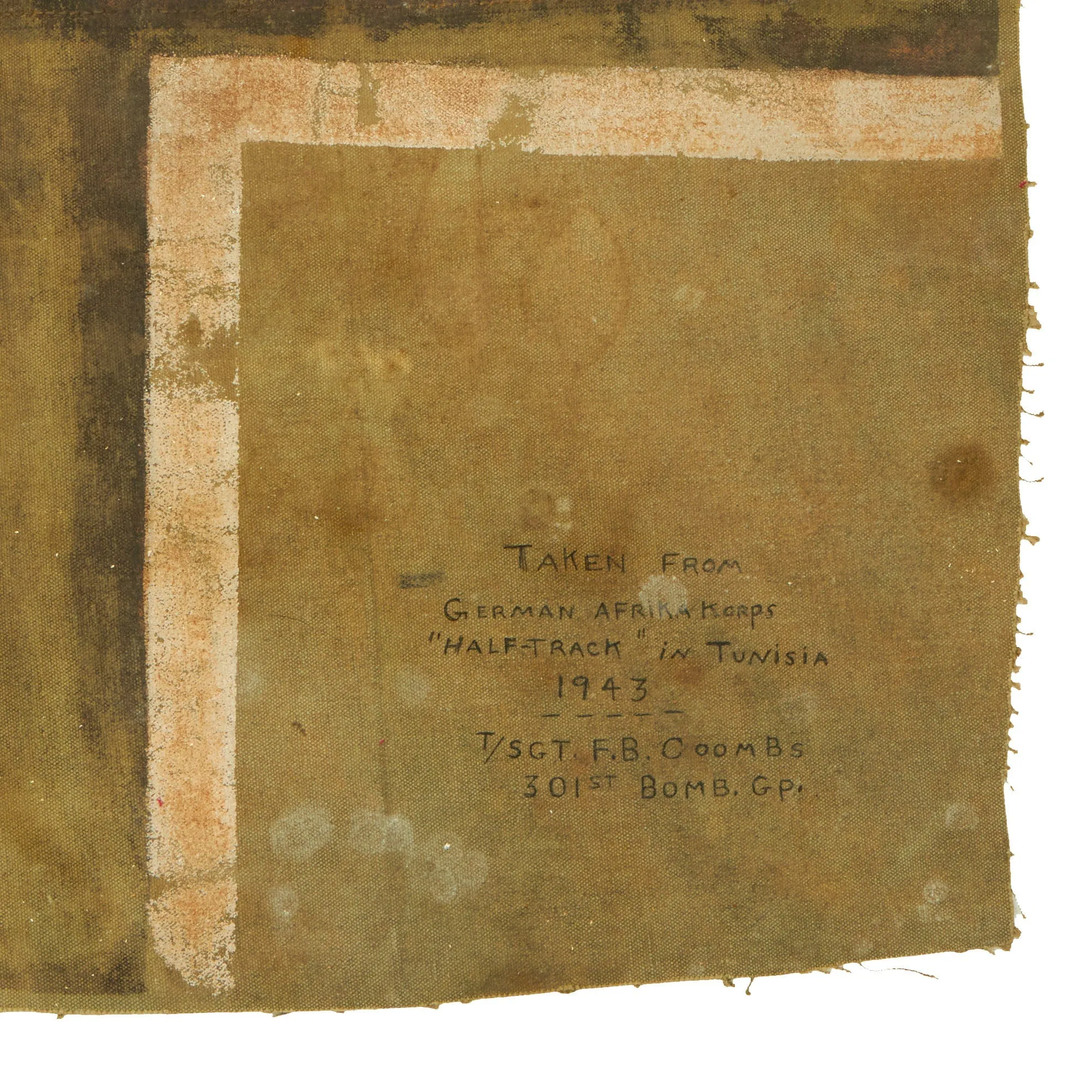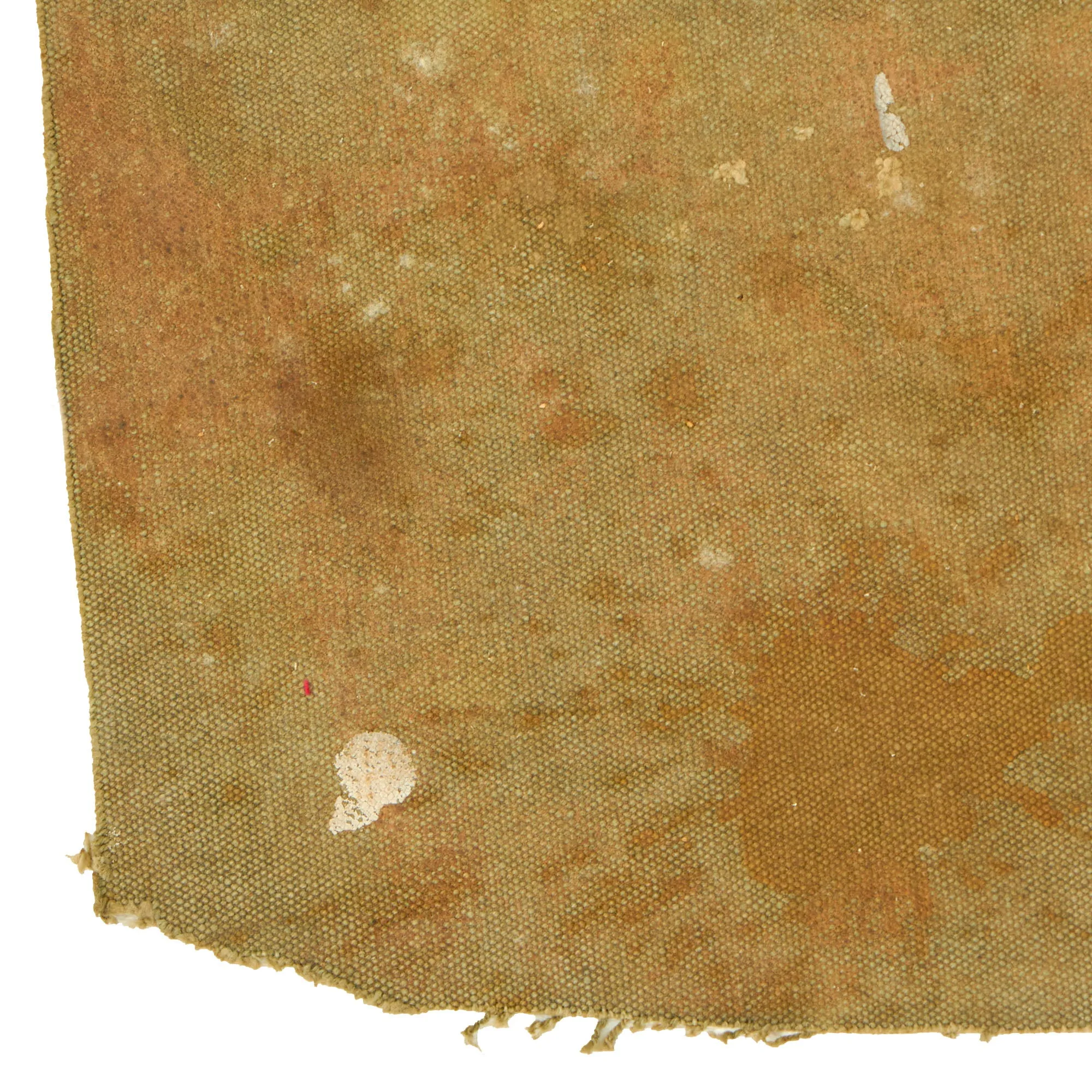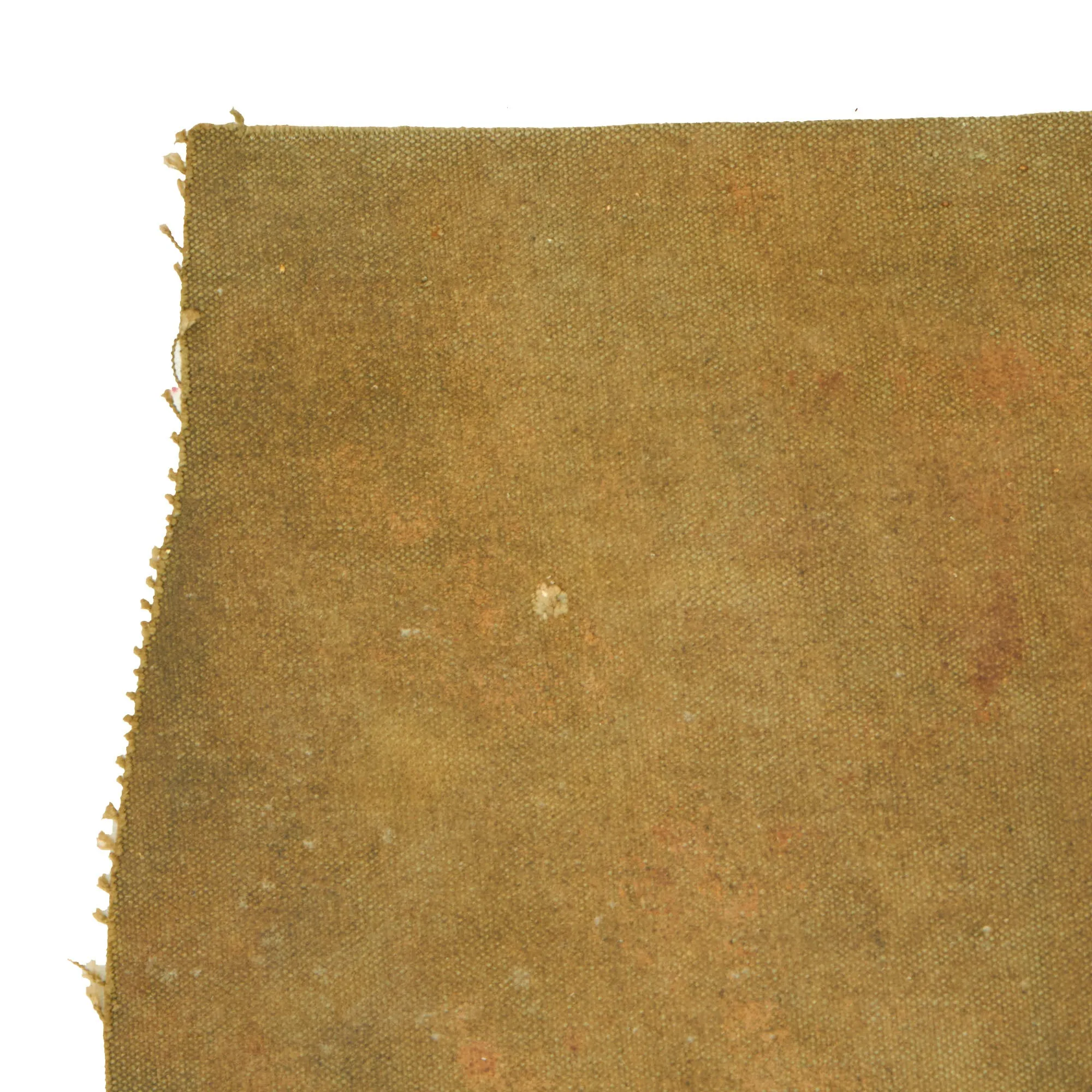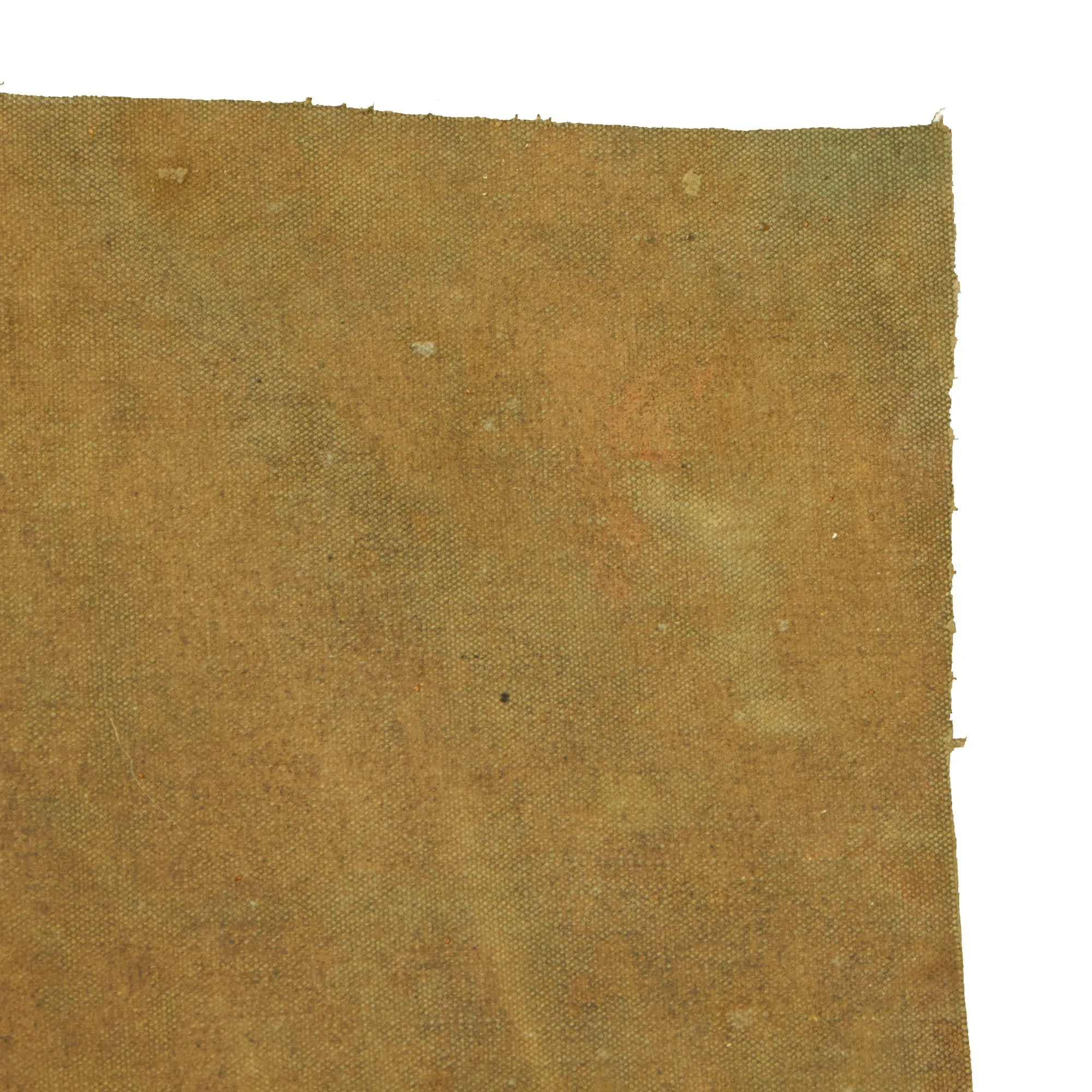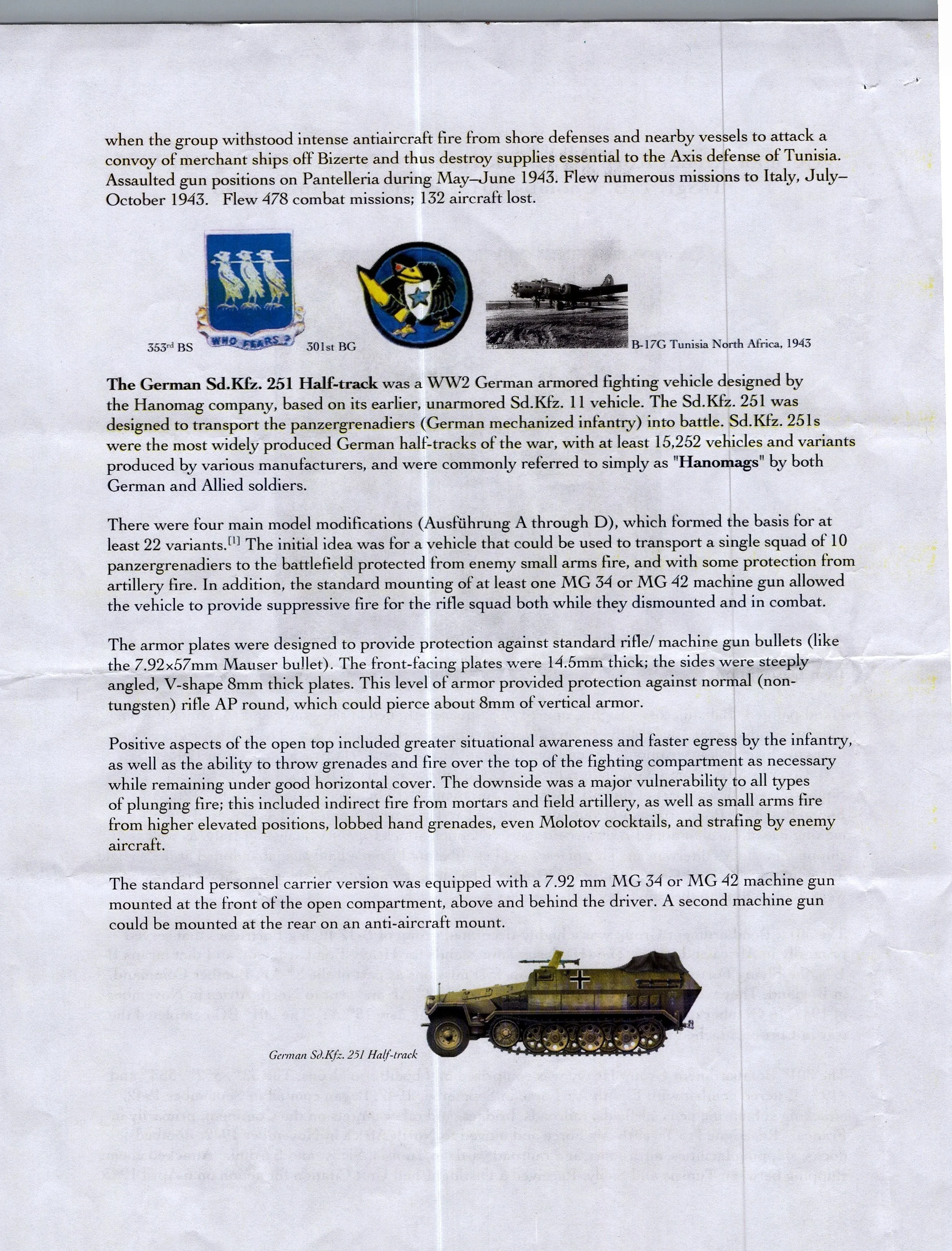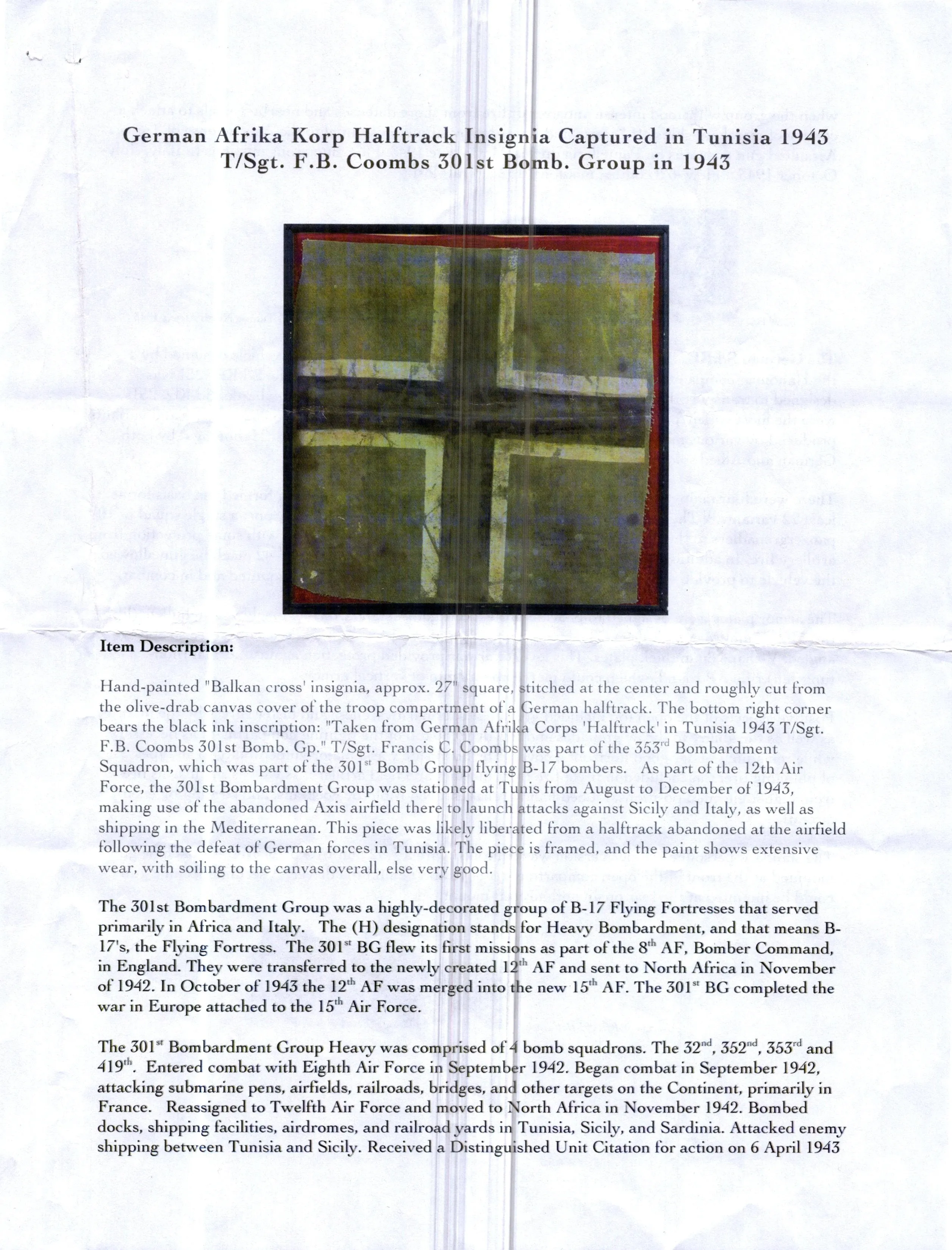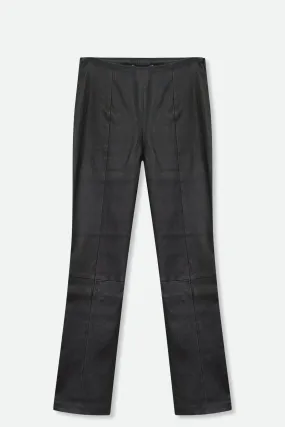Original Item: One of a Kind. Here we have a fantastic piece of history from the North African campaign of WWII! This is a piece of the Canvas Cover for a German WWII half-track vehicle, measuring approximately 27" square, which is hand-painted with the classic German Balkenkreuz (Beam Cross) insignia used on vehicles and aircraft. This was cut off by a soldier in Tunisia after the half-track was captured, and brought back as a souvenir.
During WWII Germany fielded a large variety of half-track vehicles, which they called Sonderkraftfahrzeug (special motor vehicles or Sd.Kfz), for various purposes, all with differing specifications and levels of armoring. Those such as the Sd.Kfz. 7 and Sd.Kfz. 11, which themselves had many sub variants, were not really armored and often used for troop transport. As such they were outfitted with canvas covers to be used in inclement weather, or to protect soldiers from the scorching sun in North Africa. These were made of heavy canvas, and often painted on the sides and top to aid with vehicle identification. However, the more armored Sd.Kfz. 251 also had a canvas cover on the rear, so unfortunately there is no way to tell what exact type of half-track the insignia came from.
The canvas section we have hear is in really good condition, especially considering where it was captured, and has a fantastic "battle worn" look, while still being undeniably a German WWII Insignia. The soldier who captured it wrote the full capture information on the lower right corner:
TAKEN FROM
GERMAN AFRIKAKORPS
"HALF-TRACK" IN TUNISIA
1 9 4 3
- - - - -
T/SGT. F. B. COOMBS
301ST BOMB. GP.
Per research included with the item, we know that T/Sgt. Francis B. Coombs was part of the 353rd Bombardment Squadron, which was part of the 301st Bombardment Group flying B-17 Bombers. As part of the 12th air Force, the 301st Bomb. Grp. was stationed at Tunis August-December 1943, making use of an abandoned Axis airfield there to launch bombing runs against Sicily and Italy, as well as against Axis shipping lanes in the Mediterranean. Most likely it was at this airfield where Coombs located and cut off the insignia section.
We did check the NARA database, and were able to locate Francis B Coombs, ASN 14121753, who is listed as being in the Air Corps branch. Born 1923 in Tennessee, he enlisted at Camp Forrest June 18, 1942. Coombs passed away in 2012 at the age of 89, and we were able to locate his obituary, showing that his service was quite extensive. He flew 50 combat missions as a Radio Operator in B-17 bombers during WWII. After WWII he attended OCS in the Army, becoming a Tank Commander during the Korean war, and eventually retired from the Army as a Major in 1961. After this he worked as a weapons specialist at Springfield Armory and later Fort Monroe, VA, before retiring in 1985. For more information please see his obituary here: .
The 301st Bombardment Group (H) was a highly decorated group flying B-17 Flying Fortresses that served primarily in North Africa and Italy. The "H" is for the designation "Heavy", signifying that they would be assigned 4-engine bombers and for the 301st that would become the B-17 Flying Fortress. The group relocated to England in July-August 1942 for their first combat station. They were one of only two heavy bombardment groups in the newly formed Eighth Air Force. Their first combat was in September 1942 targeting submarine pens at Rouen. Other targets were airfields, railroads and bridges in France.
The 301st transferred to the Twelfth AF after moving to North Africa in November 1942. From these bases they started bombing docks, shipping facilities, airdromes, and railroad yards in Tunisia, Sicily, and Sardinia. They even went after enemy shipping in the Mediterranean. The group received a Distinguished Unit Citation (DUC) for actions on 6 April 1943 when the group withstood intense antiaircraft fire from shore defenses and nearby vessels to attack a convoy of merchant ships off Bizerte and thus destroy supplies essential to the Axis defense of Tunisia.
The group attacked gun positions on Pantelleria during May-June 1943. Following the defeat of the Axis in North Africa they began flying missions to Italy from July-October 1943.
Following the Allies victory in Sicily and a line of attack deep into the top of the boot of Italy, the 301st was assigned to the newly formed 15th AF in November 1943. They moved to new bases in Italy in December and embarked upon a strategic campaign of various targets such as oil centers, communications, and industrial areas in Italy, France, Germany, Poland, Czechoslovakia, Austria, Hungary, Rumania, Bulgaria, Yugoslavia, and Greece.
The 301st received another "DUC" for a mission to Germany on 25 February 1944 when, in spite of vicious encounters with enemy fighters, the group bombed aircraft production centers at Regensburg.
Throughout the remainder of 1944 and 1945 until the German surrender, they supported ground operations, the invasion of Southern France and missions deep into Axis territory including Germany itself.
History of the German Africa Corps
The Afrika Korps or German Africa Corps (Deutsches Afrikakorps or DAK) was the German expeditionary force in Africa during the North African Campaign of World War II. First sent as a holding force to shore up the Italian defense of their African colonies, the formation fought on in Africa, under various appellations, from March 1941 until its surrender in May 1943. The unit's best known commander was Field Marshal Erwin Rommel.
The dry climate of Africa proved to be an issue with much of the standard leather field gear that the German Army usually used. It would dry out and crack quickly, and become unusable. To deal with this, the standard field gear such as belts, Y-straps, A-frames, bayonet frogs, and other items, were issued in special tropical web versions.




